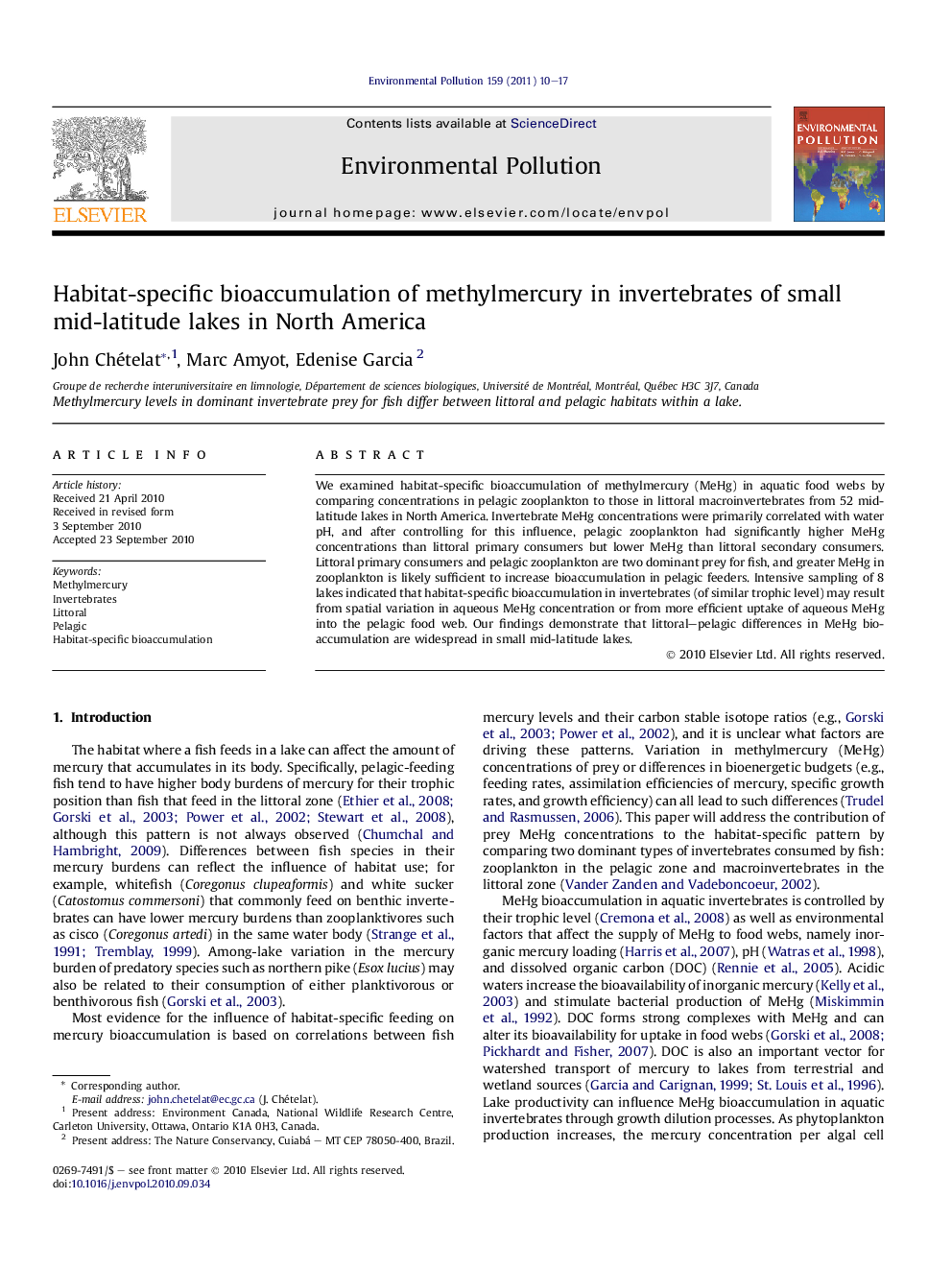| Article ID | Journal | Published Year | Pages | File Type |
|---|---|---|---|---|
| 4425614 | Environmental Pollution | 2011 | 8 Pages |
We examined habitat-specific bioaccumulation of methylmercury (MeHg) in aquatic food webs by comparing concentrations in pelagic zooplankton to those in littoral macroinvertebrates from 52 mid-latitude lakes in North America. Invertebrate MeHg concentrations were primarily correlated with water pH, and after controlling for this influence, pelagic zooplankton had significantly higher MeHg concentrations than littoral primary consumers but lower MeHg than littoral secondary consumers. Littoral primary consumers and pelagic zooplankton are two dominant prey for fish, and greater MeHg in zooplankton is likely sufficient to increase bioaccumulation in pelagic feeders. Intensive sampling of 8 lakes indicated that habitat-specific bioaccumulation in invertebrates (of similar trophic level) may result from spatial variation in aqueous MeHg concentration or from more efficient uptake of aqueous MeHg into the pelagic food web. Our findings demonstrate that littoral–pelagic differences in MeHg bioaccumulation are widespread in small mid-latitude lakes.
